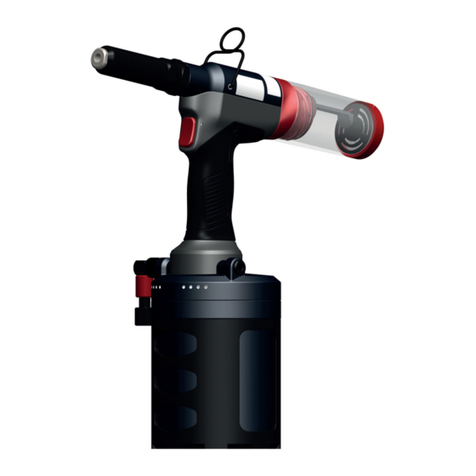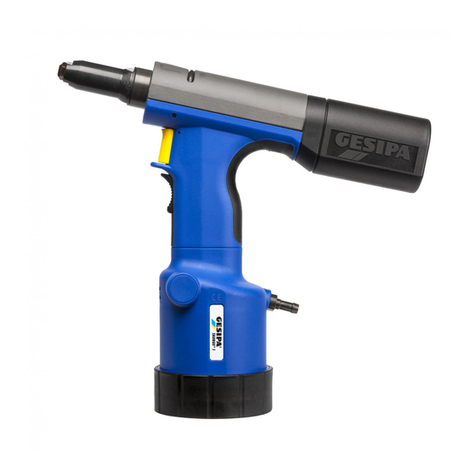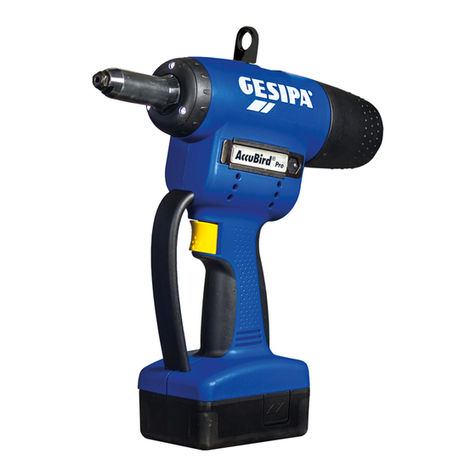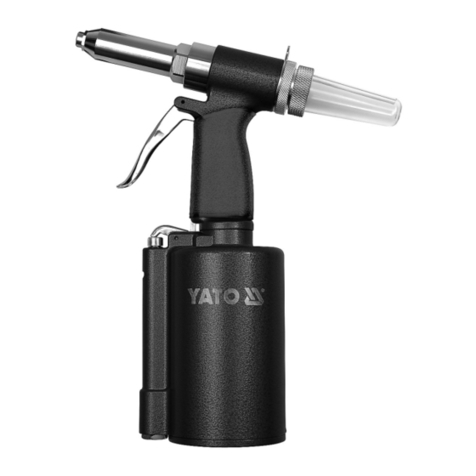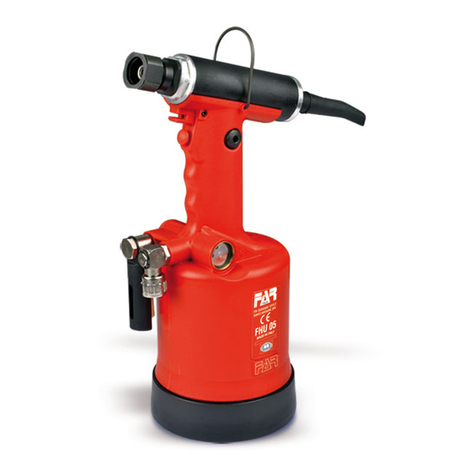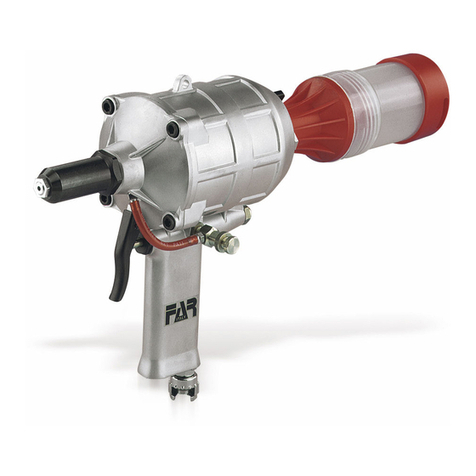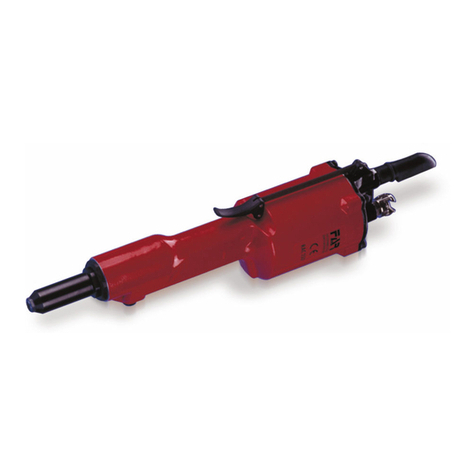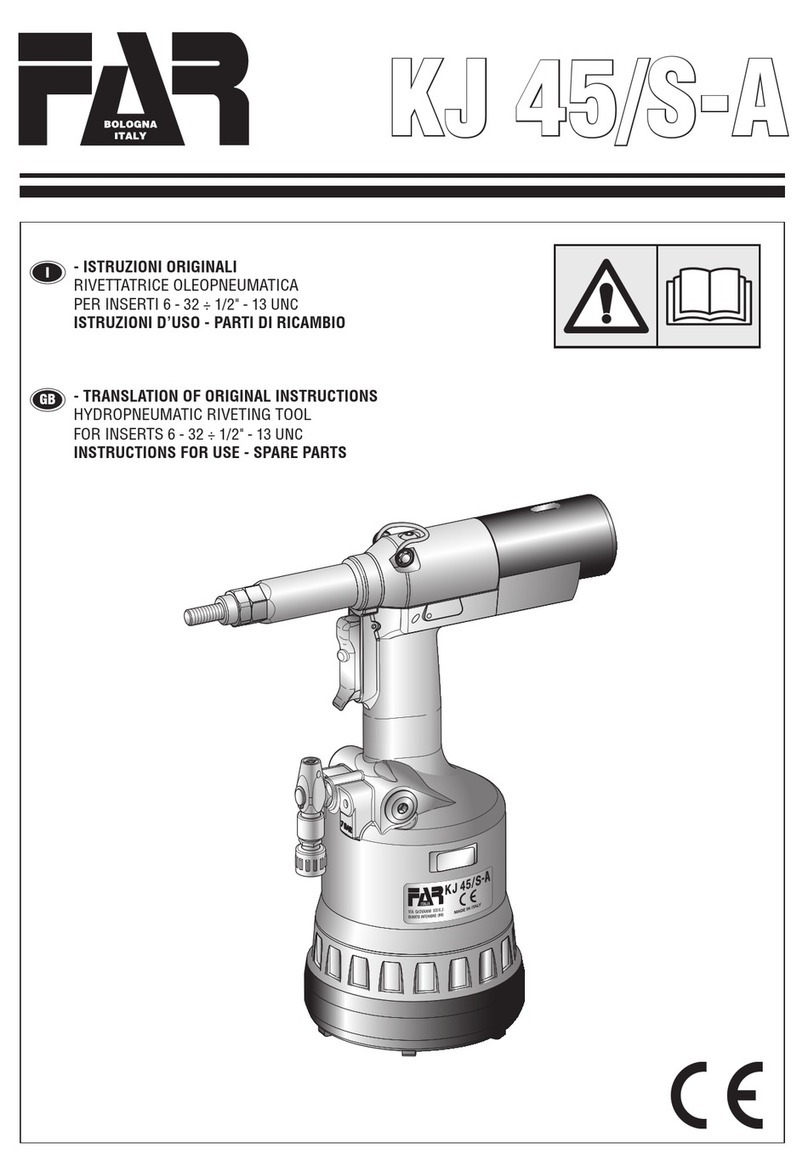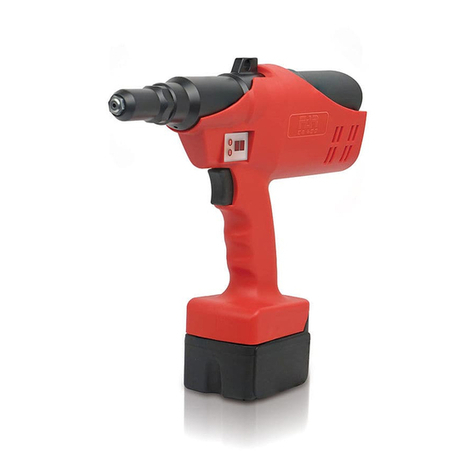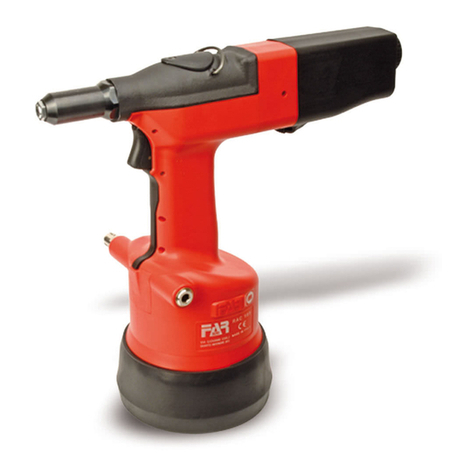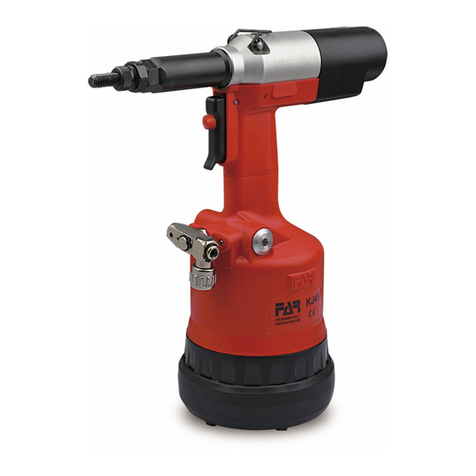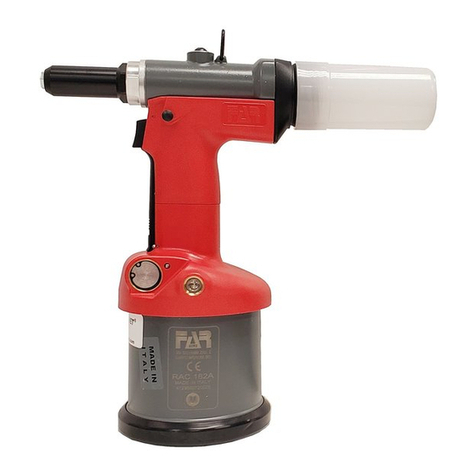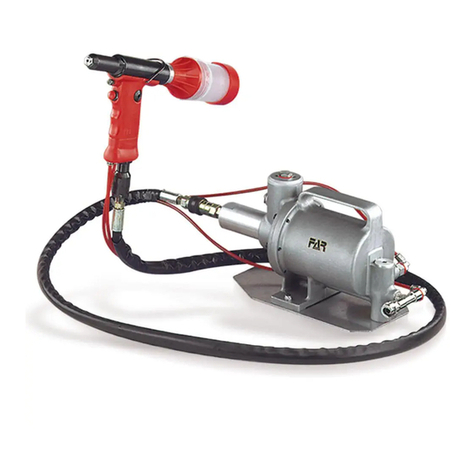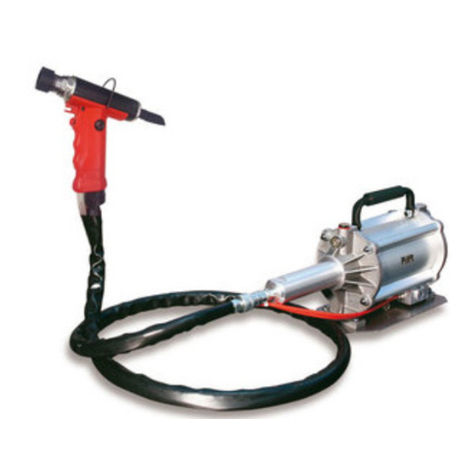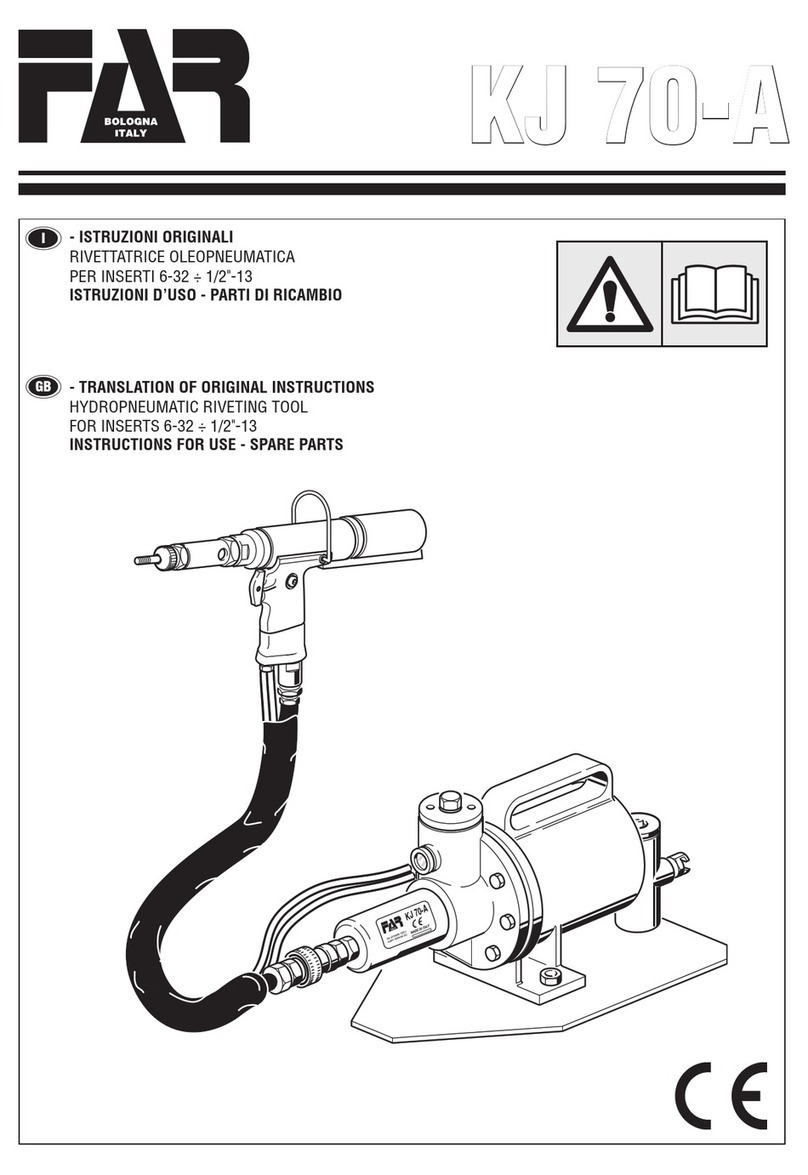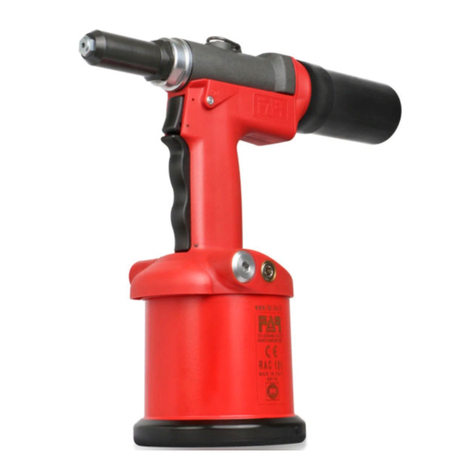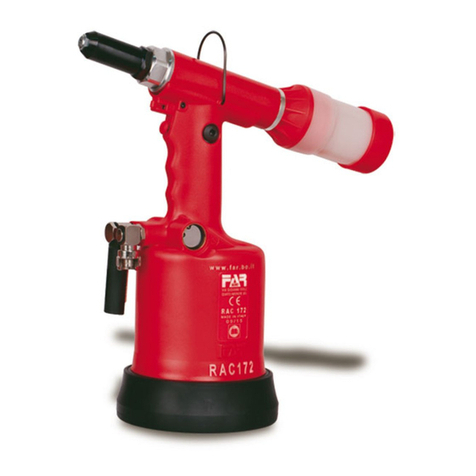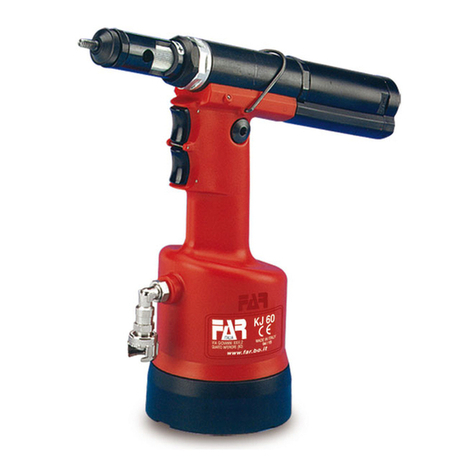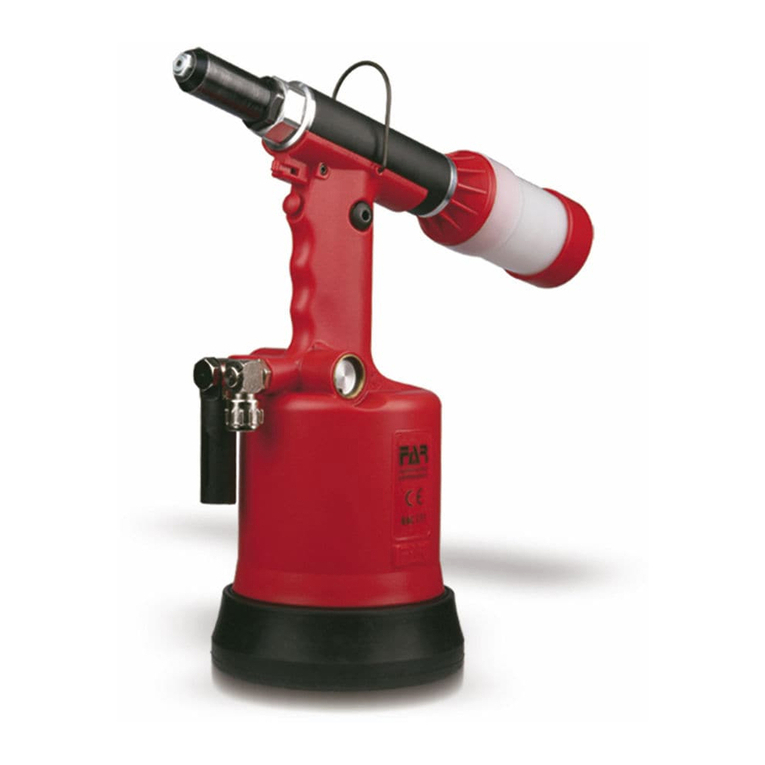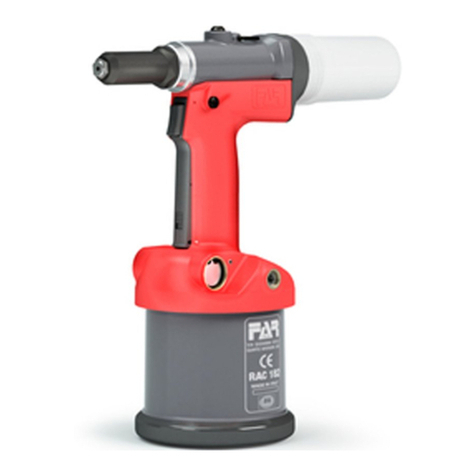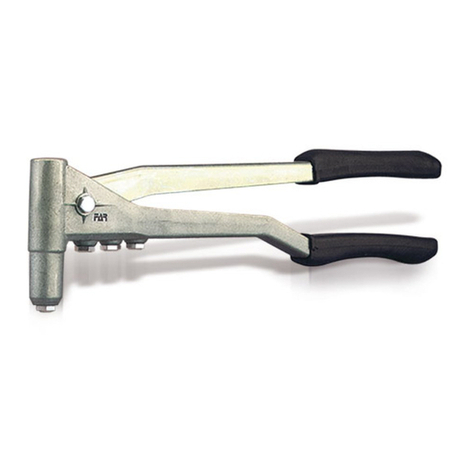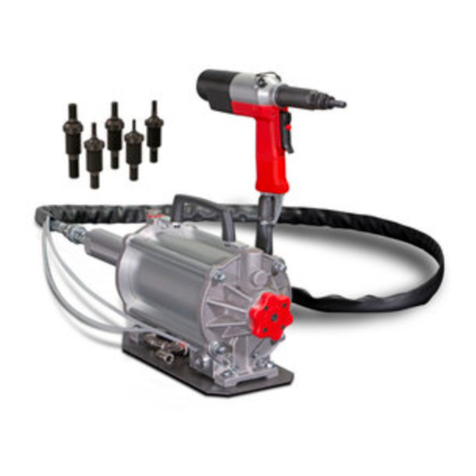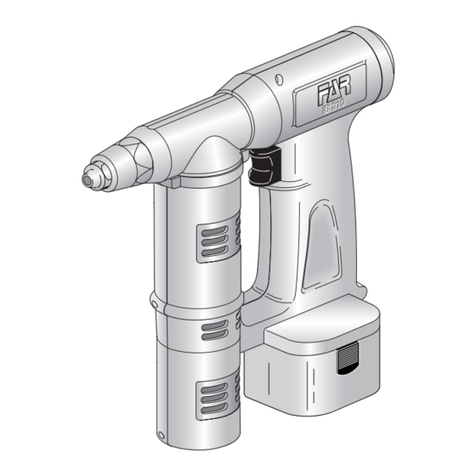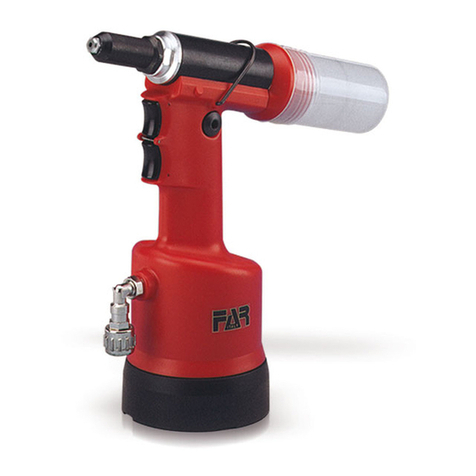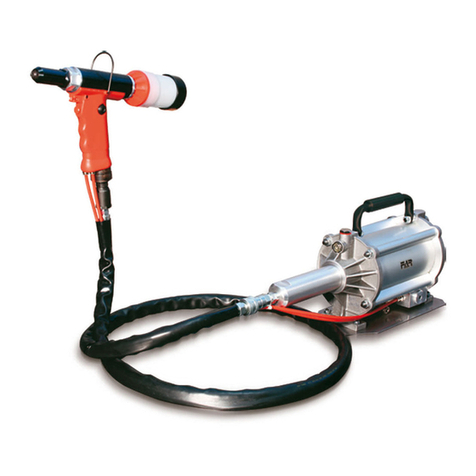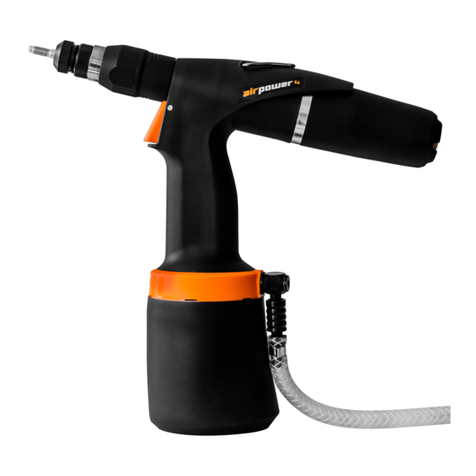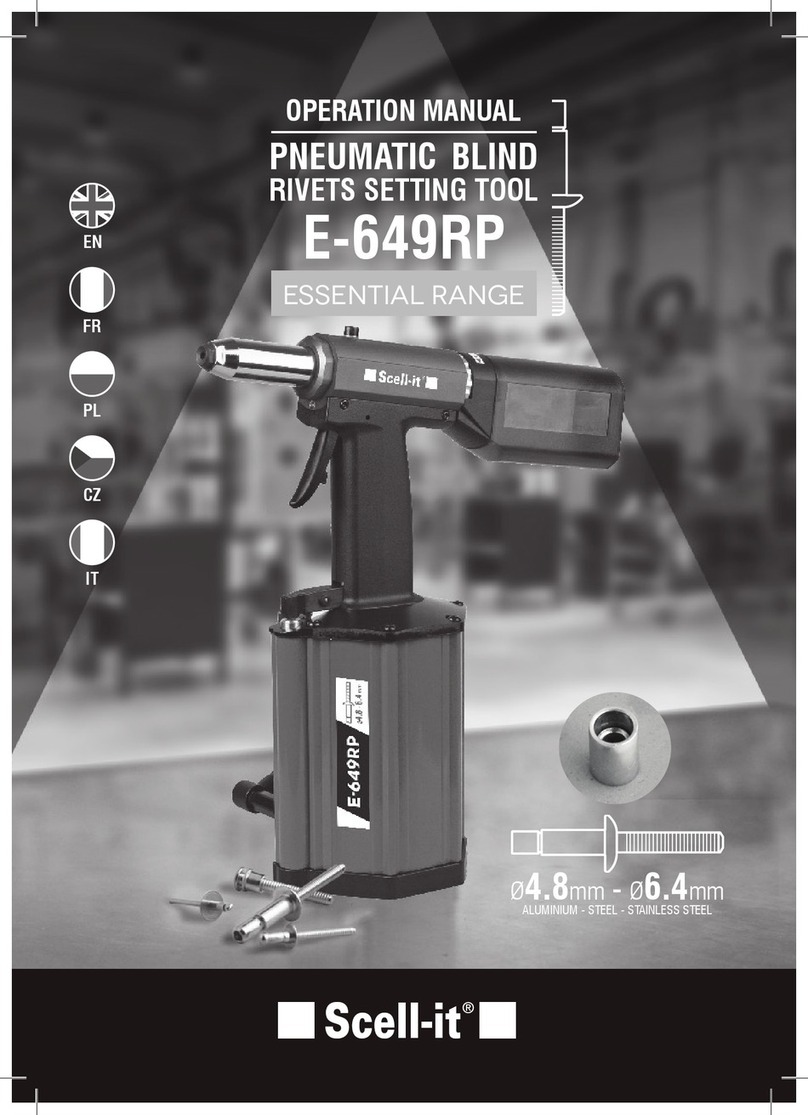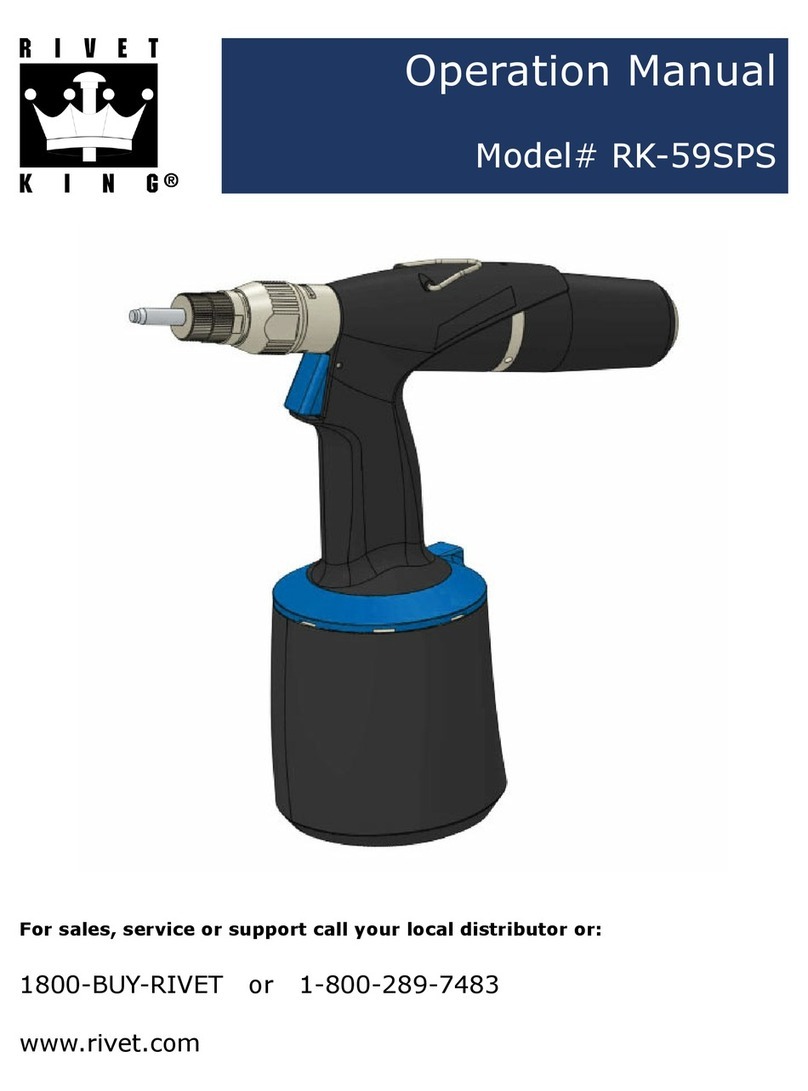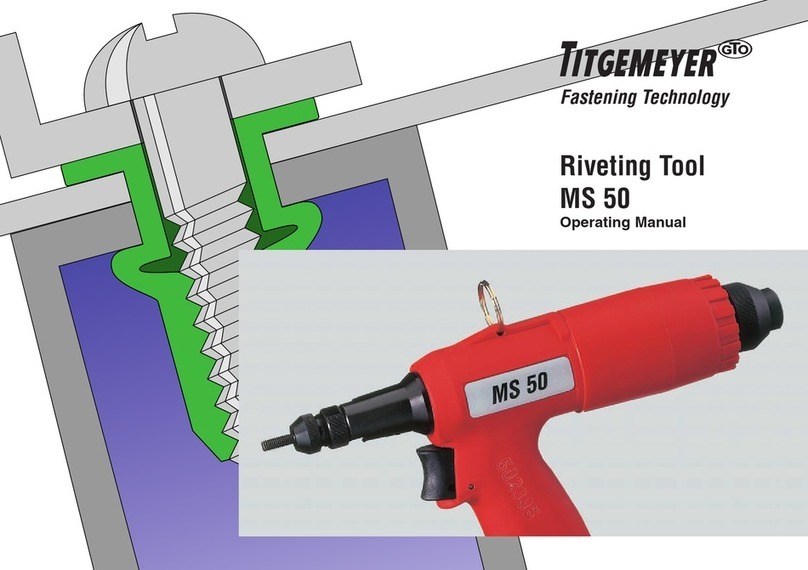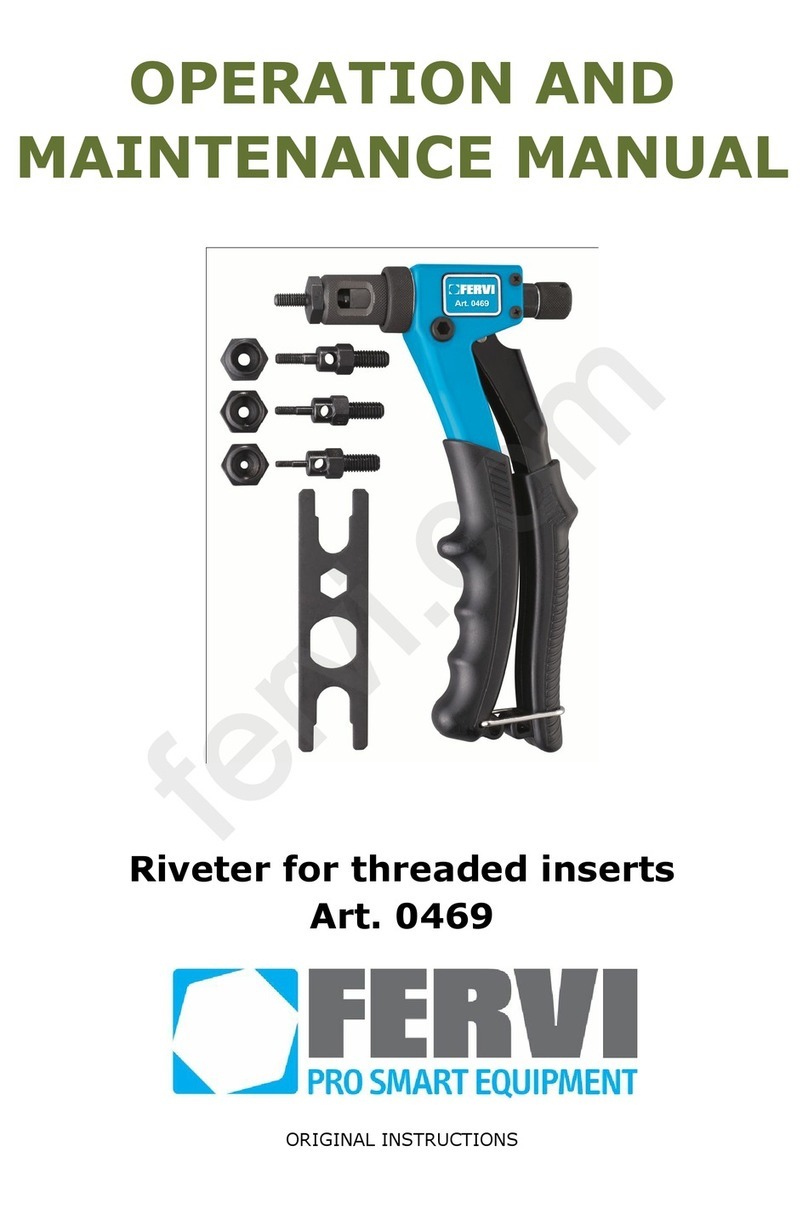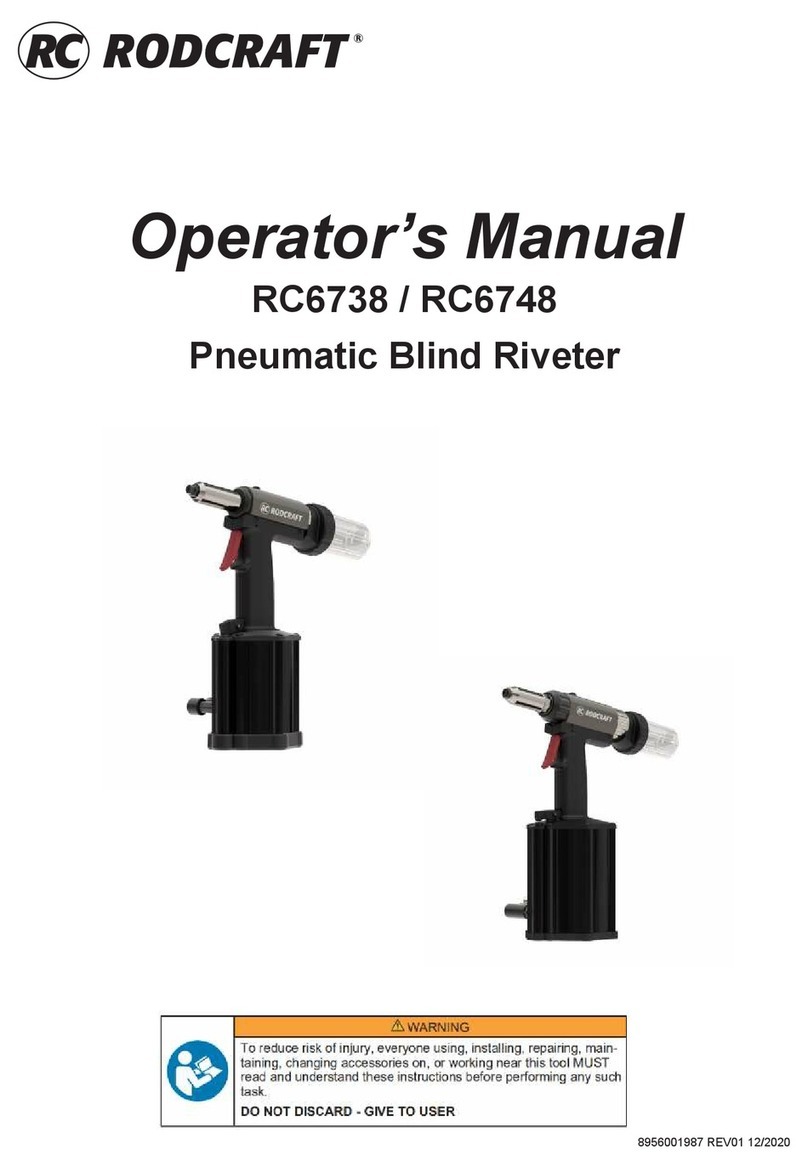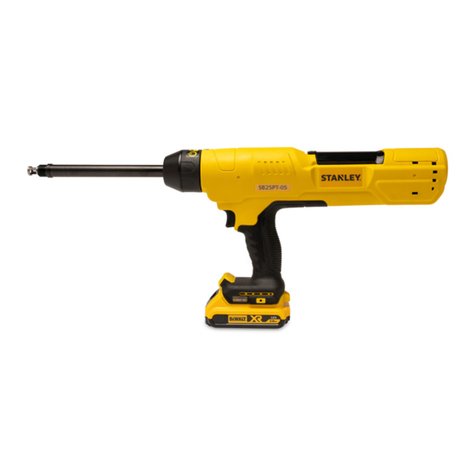
IKJ 60
6750313 - KJ60 – rev 22 - ( 04-2019 )
KJ 60
EAC
ISTRUZIONI D’USO
INDICE
GARANZIA ............................................................................6
AVVERTENZE E MISURE DI SICUREZZA...............................6
IDENTIFICAZIONE DELLA RIVETTATRICE.............................7
NOTE GENERALI E CAMPO DI APPLICAZIONE.....................7
PARTI PRINCIPALI................................................................7
DATI TECNICI........................................................................7
POSA IN OPERA DELL’INSERTO...........................................8
CAMBIO DI FORMATO ..........................................................9
RABBOCCO OLIO CIRCUITO OLEODINAMICO....................10
SMALTIMENTO DELLA RIVETTATRICE...............................10
ATTENZIONE!!!
La mancata osservanza o trascuratezza delle seguenti
avvertenze di sicurezza può avere conseguenze sulla
vostra o altrui incolumità e sul buon funzionamento
dell’utensile.
GARANZIA
Le rivettatrici FAR sono coperte da garanzia di 12 mesi.
Il periodo di garanzia dell'attrezzo decorre dal momento
della sua comprovata ricezione da parte dell'acquirente. La
garanzia copre l'utente/acquirente quando l'attrezzo viene
acquistatoattraversounrivenditoreautorizzatoesoloquando
viene impiegato per gli usi per i quali è stato concepito. La
garanzia non è valida se l'attrezzo non viene utilizzato e se
non viene sottoposto a manutenzione come specificato nel
manuale di istruzione e manutenzione. In caso di difetti o
guasti la FAR S.r.l. si impegna unicamente a riparare e/o
sostituire, a propria discrezione esclusiva, i componenti
giudicati difettosi.
• Leggere attentamente le istruzioni prima dell’uso.
• Per le operazioni di manutenzione e/o riparazione affidarsi
a centri di assistenza autorizzati dalla FAR s.r.l. e fare uso
esclusivo di pezzi di ricambio originali. La FAR s.r.l. declina
ogni responsabilità per danni da particolari difettosi, che
si dovessero verificare per inadempienza di quanto sopra
(Direttiva CEE 85/374).
L’ELENCO DEI CENTRI DI ASSISTENZA È DISPONIBILE SUL NS.
SITO WEB: http://www.far.bo.it ( Organizzazione )
• Si raccomanda l’uso dell’utensile da parte di personale
specializzato.
• Usare durante l’impiego dell’utensile, occhiali o visiere
protettive e guanti.
• Per eseguire le operazioni di manutenzione e/o di regolazione
dell’utensile utilizzare gli accessori in dotazione e/o le
attrezzature commerciali indicate nel capitolo Manutenzione.
• Per le operazioni di carica olio usare solo fluidi con
caratteristiche indicate nel presente fascicolo.
• In caso di perdite accidentali di olio che dovessero venire a
contatto con la pelle, lavarsi accuratamente con acqua e sapone
alcalino.
• L’utensile può essere trasportato a mano ed è consigliabile dopo
l’uso riporlo nel proprio imballo.
• Non esistono particolari prescrizioni per lo stoccaggio o
l'immagazzinamento.
• Si consiglia ai fini di un corretto funzionamento della rivettatrice,
una revisione semestrale.
• Gli interventi di riparazione e pulizia dell’utensile dovranno
essere eseguiti con macchina non alimentata.
• È consigliabile, ove possibile, I’uso di un bilanciatore di
sicurezza.
• In caso di esposizione quotidiana personale in ambiente il
cui livello di pressione acustica dell'emissione ponderata A
sia superiore al limite di sicurezza di 70 dB (A), fare uso di
adeguati mezzi individuali di protezione dell’udito (cuffia o tappo
antirumore, diminuzione del tempo di esposizione quotidiana
etc..).
• Mantenere il banco e/o l’area di lavoro pulita e ordinata, il
disordine può causare danni alla persona.
• Non lasciare che persone estranee al lavoro tocchino gli utensili.
• Assicurarsi che i tubi di alimentazione dell’aria compressa siano
correttamente dimensionati per l’uso previsto.
• Non trascinare l’utensile collegato all’alimentazione tirandolo
per il tubo; mantenere quest’ultimo lontano da fonti di calore e
da oggetti taglienti.
• Mantenere gli utensili in buono stato d’uso e puliti, non
rimuovere mai le protezioni e il silenziatore dell’utensile.
• Dopo avere eseguito operazioni di riparazione e/o registrazione
assicurarsi di avere rimosso le chiavi di servizio o di
registrazione.
• Prima di scollegare il tubo dell’aria compressa dalla rivettatrice,
assicurarsi che quest’ultimo non sia in pressione.
• Attenersi scrupolosamente a queste istruzioni.
• Non utilizzare la rivettatrice in presenza di evidenti danni.
AVVERTENZE E MISURE Dl SICUREZZA
ATTENZIONE!!! Prima di utilizzare la rivettatrice, montare
il fondello di protezione in dotazione, come evidenziato
nella figura sottostante. FAR declina ogni responsabilità per
eventuali danni alla rivettatrice, persone o cose causati dalla
mancata presenza del fondello.
